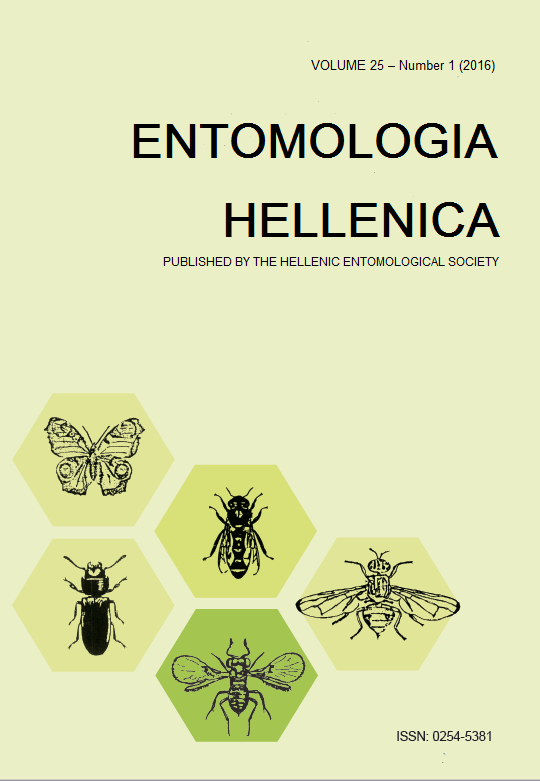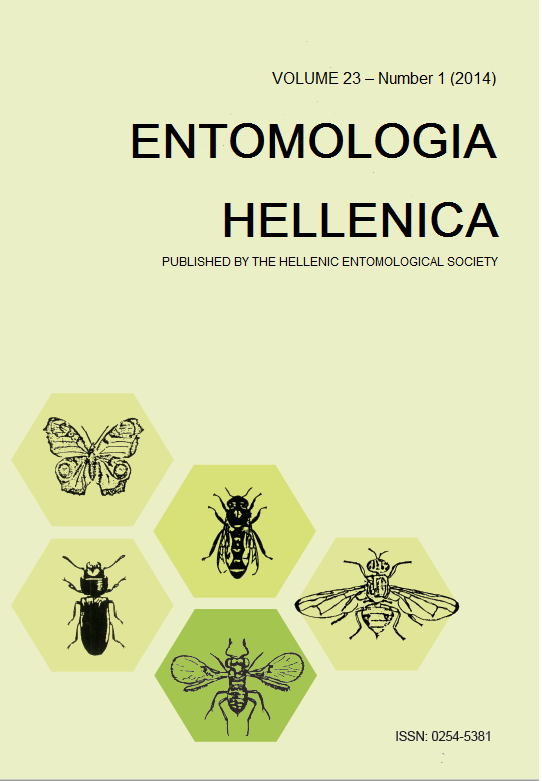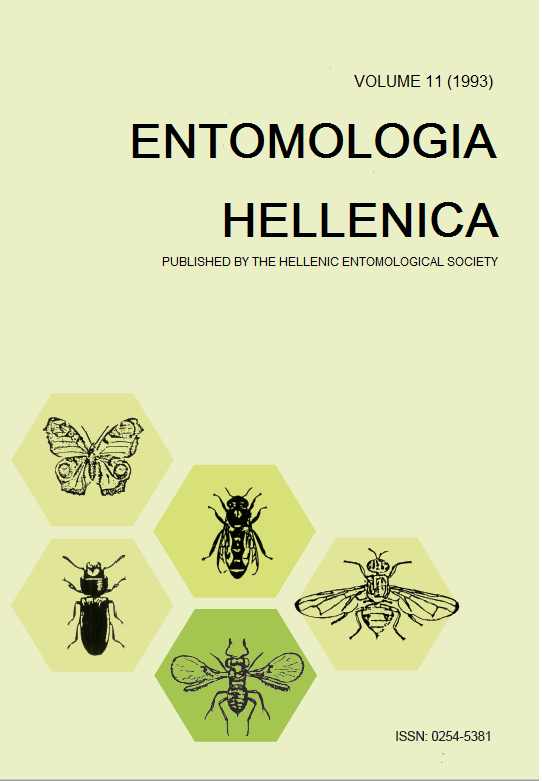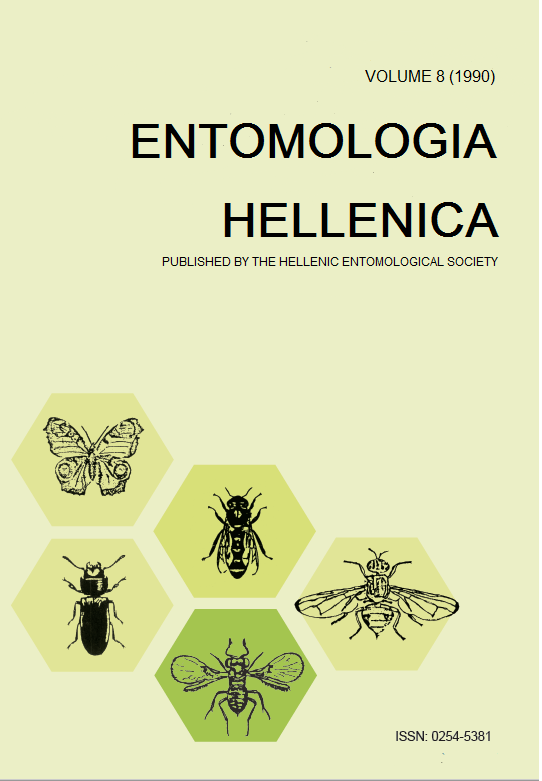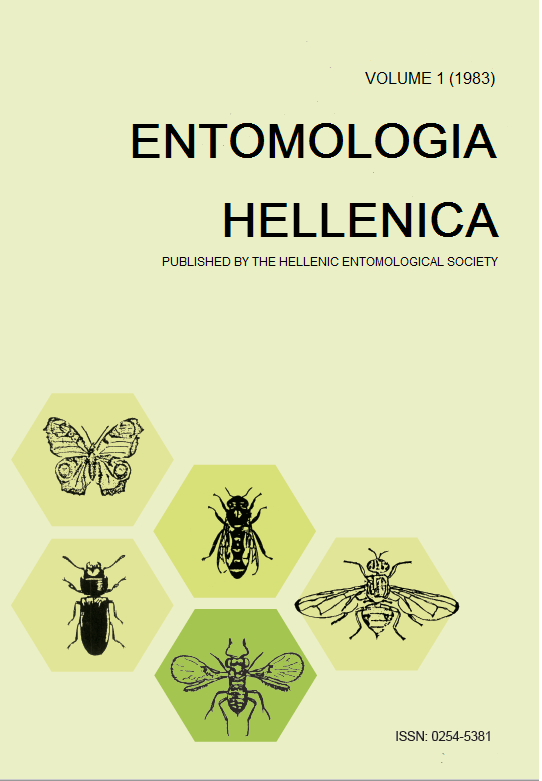Population fluctuation of Phyllocnistis citrella and its parasi-toids in two citrus species in Western Crete (Greece)
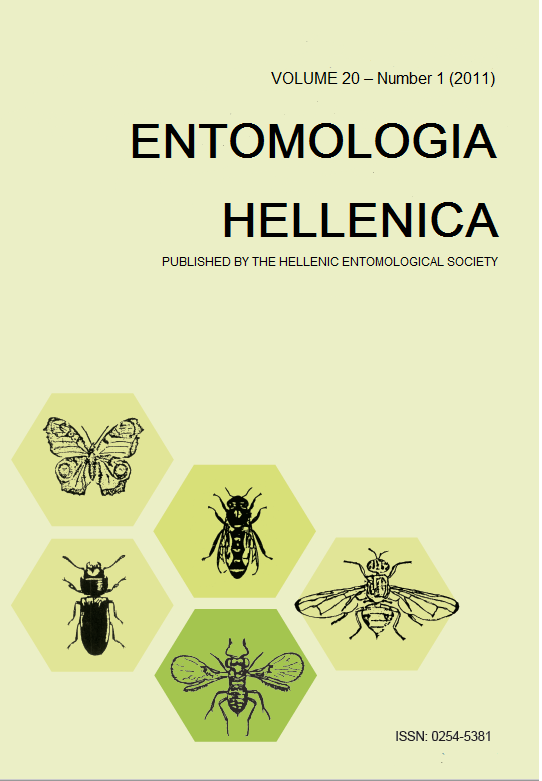
Abstract
Population fluctuation, percentage of parasitism and parasitoid species composition of Phyllocnistis citrella Stainton (Lepidoptera: Gracillariidae) were studied in a citrus orchard with orange and mandarin trees in Chania (Greece), in 1999, three years after the release of the in-troduced parasitoids Citrostichus phyllocnistoides (Narayanan), Quadrastichus sp., Semielacher petiolatus (Girault), Cirrospilus quadristriatus (Subba Rao and Ramamani) and Ageniaspis citricola Logvinovskaya. Results showed that significantly more P. citrella individuals per leaf were recorded on orange than on mandarin trees. Regarding the parasitoid complex composition, the exotic species C. phyllocnistoides, S. petiolatus and Quadrastichus sp., as well as the natives Pnigalio pectinicornis L. and Neochrysocharis formosa (Westwood) were recorded. Among them, C. phyllocnistoides was the most abundant, followed by S. petiolatus. The average percentage of parasitism reached 17% and 22% on orange and mandarin, respectively.
Article Details
- How to Cite
-
Kalaitzaki, A. P., Tsagkarakis, A. E., & Lykouressis, D. P. (2011). Population fluctuation of Phyllocnistis citrella and its parasi-toids in two citrus species in Western Crete (Greece). ENTOMOLOGIA HELLENICA, 20(1), 31–44. https://doi.org/10.12681/eh.11506
- Issue
- Vol. 20 No. 1 (2011)
- Section
- Articles

This work is licensed under a Creative Commons Attribution-NonCommercial-ShareAlike 4.0 International License.
Authors who publish with this journal agree to the following terms:
Authors retain copyright and grant the journal right of first publication with the work simultaneously licensed under a Creative Commons 4.0 license.
Authors are able to enter into separate, additional contractual arrangements for the non-exclusive distribution of the journal's published version of the work (e.g. post it to an institutional repository or publish it in a book), with an acknowledgement of its initial publication in this journal. Authors are permitted and encouraged to post their work online (preferably in institutional repositories or on their website) prior to and during the submission process, as it can lead to productive exchanges, as well as earlier and greater citation of published work.



